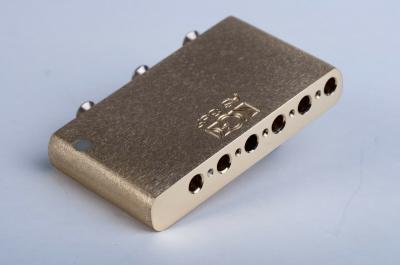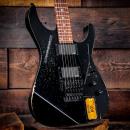El hilo es antiguo, pero lo revivo.
Pienso que el material del bloque puede cambiar el sonido, y a veces de forma notoria. Yo he probado tres tipos con mi Stratro CV50:
- Latón (el que actualmente tengo puesto)
- Acero de fundición, no pulvimetalurgia
- El infame bloque que trae la Squier CV50 de Zinc (pulvimetalurgia)
El que más me ha gustado es el de latón, por su sonido dulce y suficientemente afilado, no pierde mucho en la parte alta. El de acero puede dar más agudos, pero me gusta menos su tonalidad, más metálica.
Hay muchos tipos de acero, distintos por sus componentes (carbono, silicio, cromo, etc.) y sus tratamientos térmicos, lo que les confiere distintos grados de dureza y su forma de resonar.
Sobre el taladro del bloque que guia la cuerda, lo normal es que la bola de la cuerda esté situada bastante alejada del taladro de salida de cuerda, y esto, según parece, también puede influir. Hay un luthier italiano, un tal Frudua que dice que es mejor acortar la longitud de este taladro y tiene un video en Youtube donde lo explica, lo que no recuerdo es para qué fin.
Pienso que el material del bloque puede cambiar el sonido, y a veces de forma notoria. Yo he probado tres tipos con mi Stratro CV50:
- Latón (el que actualmente tengo puesto)
- Acero de fundición, no pulvimetalurgia
- El infame bloque que trae la Squier CV50 de Zinc (pulvimetalurgia)
El que más me ha gustado es el de latón, por su sonido dulce y suficientemente afilado, no pierde mucho en la parte alta. El de acero puede dar más agudos, pero me gusta menos su tonalidad, más metálica.
Hay muchos tipos de acero, distintos por sus componentes (carbono, silicio, cromo, etc.) y sus tratamientos térmicos, lo que les confiere distintos grados de dureza y su forma de resonar.
Sobre el taladro del bloque que guia la cuerda, lo normal es que la bola de la cuerda esté situada bastante alejada del taladro de salida de cuerda, y esto, según parece, también puede influir. Hay un luthier italiano, un tal Frudua que dice que es mejor acortar la longitud de este taladro y tiene un video en Youtube donde lo explica, lo que no recuerdo es para qué fin.












